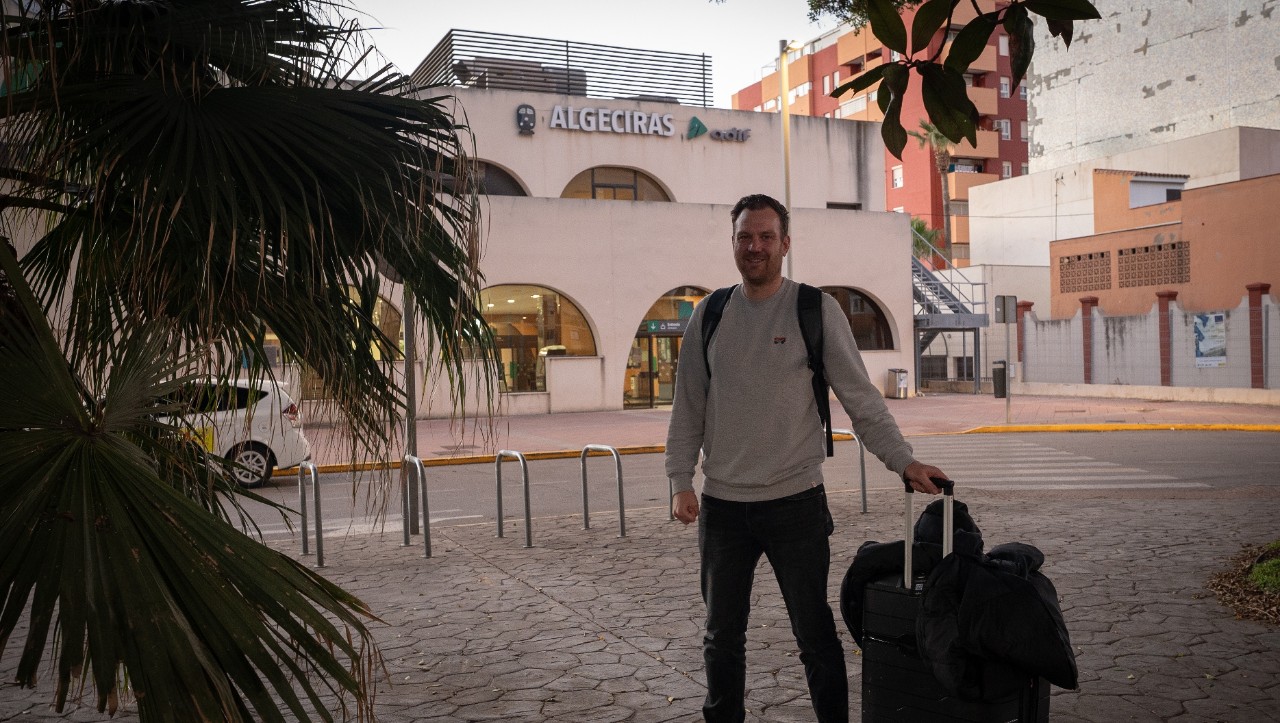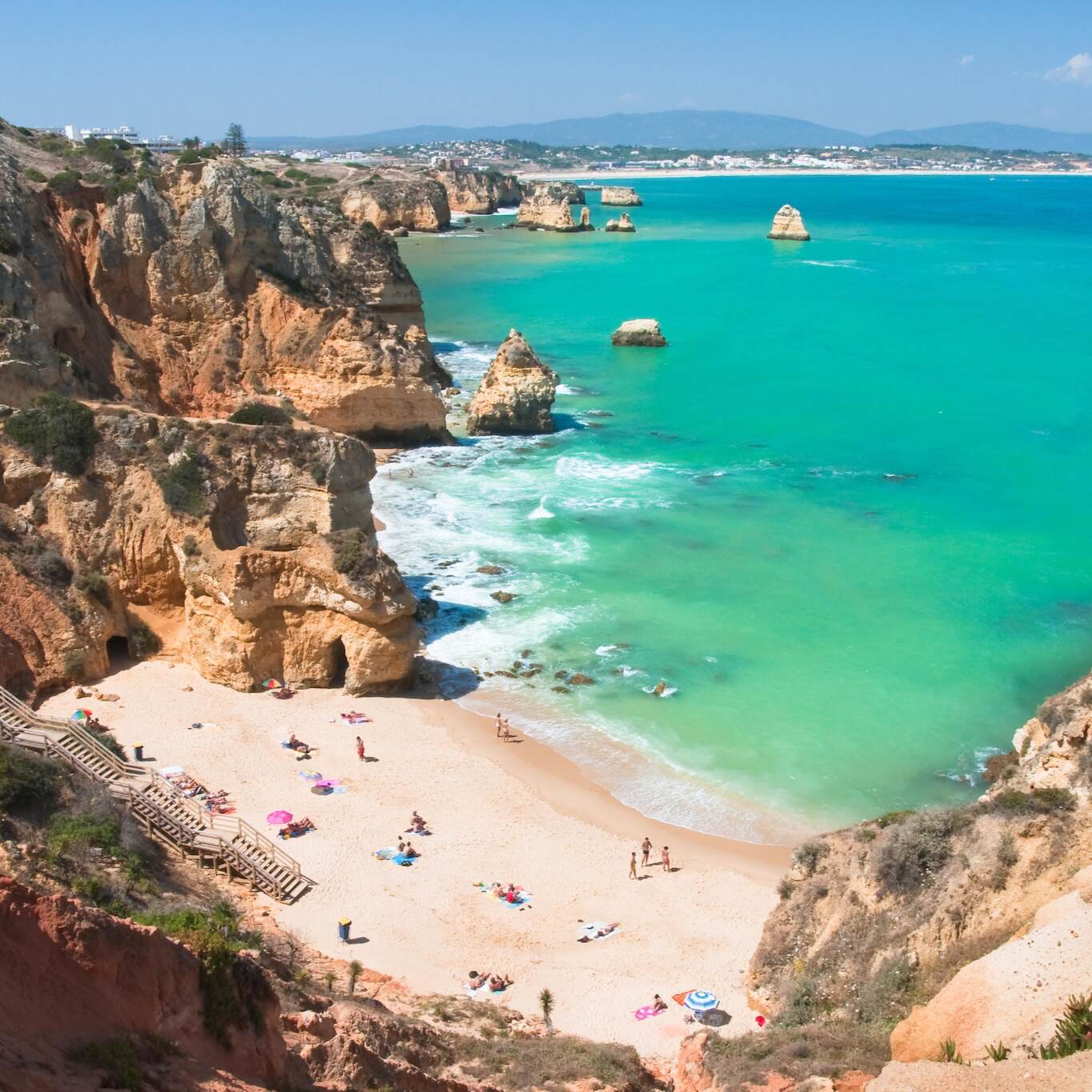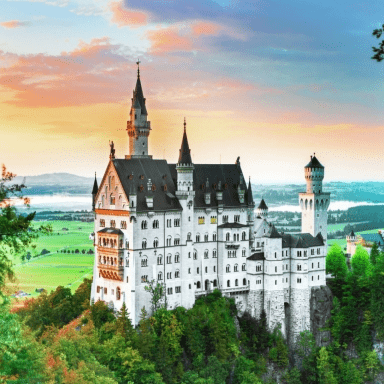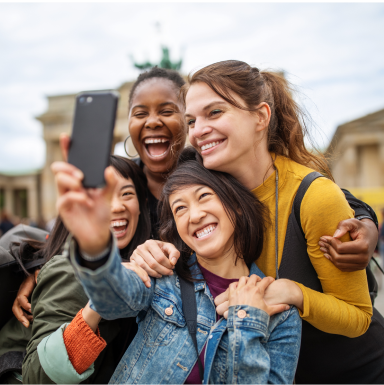
How this sustainable adventurer fell in love with train travel
Wiebe Wakker recently travelled from Amsterdam to Algeciras with an Interrail Pass
18 April 2024
On an evening in early January, Wiebe Wakker was sitting quietly on a regional train, traveling from Antequera to Algeciras in southern Spain. By nightfall, he would arrive at Algeciras Railway Station, the southernmost train station in Eurail’s Pass Network.
But, until then, he was free to watch the sun slowly set behind the Andalusian mountains, painting the landscape red and gold.
“This part of Spain was new to me,” said Wakker, who travelled with an Interrail Pass (note: the Eurail Pass is intended for non-European citizens or non-European residents, while European citizens can use an Interrail Pass ).
“Before I went, I really had a different idea of what the southern part of Spain would look like. But it's so different and even more beautiful than what I had in my mind.”
Travelling through Andalusia by train wasn’t Wakker’s first adventure by rail. Over the years, he has developed a career as a “sustainable adventurer”, who frequently travels the world for speaking engagements where he discusses human connection, collaboration and perseverance.
Wakker’s unconventional professional path began at the end of his university years. He decided, as part of his graduation project, to drive an electric car from the Netherlands to Australia. He took no money with him, instead launching a website where kind strangers could offer meals, places to sleep and electricity for the car. Along the way, Wakker promoted sustainability projects in the places he visited.
“I saw with my own eyes what a mess we are making of our planet,” Wakker said. “Because of that trip, I changed from an opportunistic traveler into someone who actually cares about the environment.”
After roughly three-and-a-half years – and a winding route through 33 countries – he arrived at his destination.
“Since then, I try to make all my trips sustainable,” said Wakker. “Within Europe, I don't fly. When I speak outside of Europe, I try to see if I can get there in a sustainable way.”
In January, after traveling with the Interrail Pass from Amsterdam to the bottom of Spain, Wakker ventured even further. He took a ferry to Morocco and then highspeed rail, buses and vans to Mauritania, where he rode the country’s famous iron ore train for 17 hours through the Sahara Desert.
Wakker wasn’t always so dedicated to train travel. “I was not, from the beginning, like a super big fan of trains or anything, which is what a lot of people expect from me,” he said. “But, when I started to looked at how I can could travel in a sustainable way, trains were the most logical option.”
“[Trains] can get you far in a relatively short amount of time,” he said. “It's a convenient, very relaxing way to travel. And, of course, when powered by electricity, it’s very sustainable.”
We spoke with Wakker about how he fell in love with train travel and his tips for fellow travelers embarking on a Eurail trip.
Trains allow you to see more of Europe
For Wakker, part of the beauty of train travel lies in the in-between moments – the stretches of countryside and villages between major destinations.
Take his travels through southern Spain, for example. Instead of exclusively visiting cities such as Barcelona and Antequera, he saw vast desert-like areas and mountains unfold around him on the train.
“That’s a nice thing about train traveling; when you take a flight, you go from A to B, and you’re instantly and completely in a different world,” he explained. “But the journey to the destination is so much more fun [by train].”
“You see the scenery gradually change,” Wakker said. “It really gives you a different sense of the world that is pretty amazing.”
Traveling by train may help you save time
Trains can also be more convenient than flying, said Wakker. “With the train you [can] save time, because you start in the middle of a city and the train brings you to the heart of a different city,” he said, noting how many train stations are in the center of cities versus the suburbs, as is the case with many airports.
“With flying, you first have to get to the airport, wait hours, check your stuff, and when you reach your destination, you have to wait for your bags and then travel to the city,” he continued. In this sense, traveling by train “can actually save you a lot of time.”
Traveling by train allows you to reach hidden gems
While train travelers spend lots of time in large, famous cities across Europe, they also have the ability to conveniently visit lesser-known villages and natural areas, Wakker said.
“Most Interrail travelers, they might go to the big destinations, but they make a lot of stops in the smaller places, where mainstream tourists don’t tend to go,” he said. “They might stay locally, instead of staying at a big hotel branch, [and] buy a souvenir from a local business.”
Embracing slow travel and visiting less popular places is beneficial for travelers as well as their destinations, Wakker adds. In addition to countering the effects of overtourism and putting money into local economies, “you learn a lot more about cultures and the regions you are visiting,” he said.
Trains are great places to connect with fellow travelers
Traveling solo can be a liberating, exciting experience – but even seasoned solo adventurers know it can be lonely, too. Wakker said he enjoys taking the train because it’s an easy place to connect with locals or chat with fellow travelers.
“People are sometimes hesitant to approach new people while traveling. I was, too, in the beginning. I’m kind of introverted, and it can be hard to approach people,” he said.
Despite initial discomfort, Wakker encourages fellow travelers to be friendly and strike up conversation with others on the train.
"Over time, I found that basically every traveler is happy to meet other people. As a solo traveler, the train is a perfect place to make connections with people, because lots of other people are traveling alone and are eager to talk to someone,” he said. “You often end up having really meaningful and interesting conversations.”
Tips for Eurailers and Interrailers
Wakker has a few additional tips for Eurailers and Interrailers, especially those who are about to embark on their first train adventure.
He encourages fellow travelers to plan their journeys ahead of time, but stay flexible and embrace spontaneity along the way.
“Among all of your planned stops, you might unexpectedly discover a new place that you find interesting,” he said. “With an Interrail trip, you have the opportunity to say, ‘I think I’ll get off at this train station and explore for a while before continuing with my trip.’”
In addition, he adds, “it’s handy to have all of your travel apps ready, like the Rail Planner app.” It’s important to download and familiarize yourself with the Rail Planner app ahead of time, so you’re comfortable planning and adjusting your itinerary and purchasing necessary seat reservations.
He also advises travelers to learn a few basic phrases – such as “hello” and “thank you” – in the languages spoken in the destinations they plan to visit.
Lastly, he reminds fellow travelers to simply enjoy the ride. “Just embrace the adventure,” he said. “You can look at a map, throw a dart with your eyes closed and just go there. You’ll probably find the destination amazing and really enjoy the trip along the way.”
Wakker’s next adventure
Back home in the Netherlands, in between speaking engagements, Wakker is dreaming about his next adventure. “I’m currently brainstorming what to do next,” he said.
Northern Europe seems to be calling him.
“This year, beginning in September, is supposed to be the best time to see the Northern Lights in more than 10 years. I would really love to do a train trip to the Arctic Circle in Europe to see that.”
Wakker traveled as part of a partnership with Eurail.
Feeling inspired? With Interrail, you can:
Change of currency
You cannot change the currency once you have a Pass in your cart. Remove the Pass, and then change the currency on the website header.






